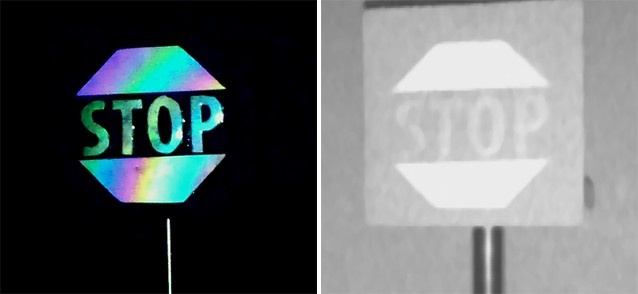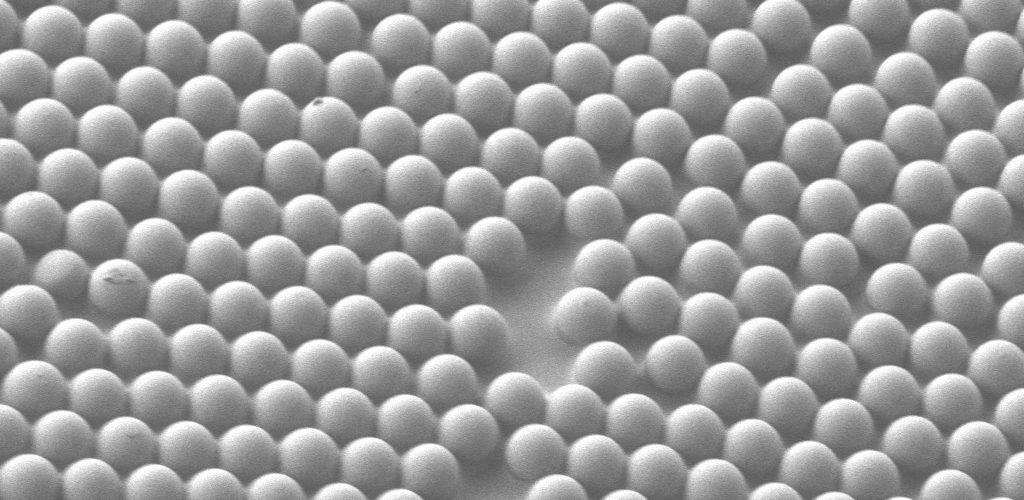
Some people who have recently replaced vehicles may be surprised to see the speed limit on the road being displayed on the dashboard instead of on the navigation screen. Cars equipped with a driving assistance system from 10 years ago have been equipped with a function to recognize and read the cover color and shape with a camera. However, in the real world, it is not always possible to read properly because various factors such as brightness, weather, obstacles, and damage depend on it.
A team of researchers at the State University of New York at Buffalo has investigated a new material called microscale concave interfaces (MCIs) that could make it easier for computers to read road signs. This material consists of a thin film of small polymer balls embedded in a film, which scatters light instead of reflecting it toward the car, creating an eye-catching pattern. This pattern reflects, for example, rainbow-colored rings in white light, and monochromatic and infrared lasers reflect a ring pattern by contrast.

The research team said that the current autonomous driving system has many problems in recognizing signs in general outdoor environments, but if it is a cover made using this film, it will be possible to recognize the type of cover by the ring pattern read by recognizing it with the lidar and camera images. If it works as intended, autonomous driving systems may be able to drive more safely.
The research team believes that MCI material can be applied to electronic sensors, anti-counterfeiting tools, and reflective displays. In future experiments, we plan to investigate the state of change in the reflection effect by changing the light wavelength or by changing the micropolymer ball material.
In order to apply the autonomous driving system to general road functions, it is necessary not only to grasp the surrounding situation through various sensors, but also to recognize the same information that human drivers always process, such as road signs and lanes. Although this study is still in its infancy, increasing the precision of sign reading could help improve the function of driving assistance systems. Related information can be found here.


















Add comment